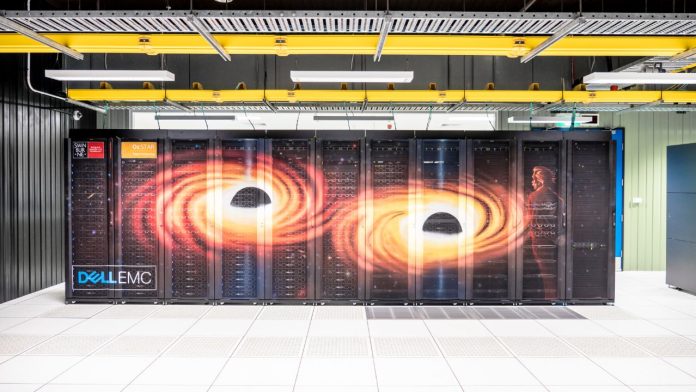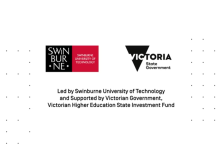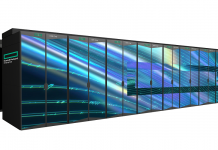
Media Release by Swinburne University of Technology
One of Australia’s most powerful supercomputers is getting a major upgrade, with Swinburne University of Technology designing and installing a new space-focused machine with the support of $5.2 million in funding from the Victorian Government’s Higher Education State Investment Fund.
The new facility will be the largest scale supercomputer readily available to Victorian researchers and will help unlock the mysteries of the human brain, the natural world and the universe beyond our planet.
The supercomputer will also have a Woi Wurrung name and design on its façade that reflects local Aboriginal knowledges about the spectacular Southern night sky, created through consultation with the Wurundjeri community led by Swinburne’s Moondani Toombadool Centre. In partnership with the Wurundjeri Woi Wurrung Cultural Heritage Aboriginal Corporation, Swinburne’s supercomputer will also develop new educational partnerships with Aboriginal and Torres Strait Islander youth and communities in Victoria and beyond.
Swinburne’s Chief Scientist, Professor Virginia Kilborn said that Swinburne was delighted to be building the new supercomputer with the Victorian Government’s support.
‘This supercomputer will allow Victoria to remain at the forefront of Swinburne’s world-leading research areas, including space, sustainability, medical technology and more,’ said Professor Kilborn.
‘By bringing researchers and industry together with cutting-edge technology, the supercomputer will support new discoveries and ways of thinking that can help create a better world.’
After touring the Swinburne Hawthorn campus where the new supercomputer will be housed, Minister for Training and Skills Gayle Tierney spoke about putting Victoria at the forefront of space technology, medicine, and environmental research.
‘We’re continuing to back our local universities to ensure Victoria remains at the forefront of innovation and to help the sector emerge strongly from the pandemic,’ said Minister Tierney.
The supercomputer will have a processing capacity that is millions of times beyond that of a regular computer, supporting the massive amounts of data generated in fields such as astronomy, medical technology, economics and environmental modelling.
Some of the key projects the supercomputer will enable include:
- Supporting the development of new space technologies and improving understanding of gravitational waves, black holes and galaxy formation.
- Understanding how the brain operates through analysis of brain data by neuroscientists and neuroimaging experts.
- Better understanding of our planet including research into bushfire detection, and natural disaster planning and response.
‘Supercomputers are at the heart of modern science and engineering challenges’, explains project leader Professor Matthew Bailes, who leads both the Swinburne Data Science Institute and the Australian Research Council Centre of Excellence for Gravitational Wave Discovery (OzGrav).
‘This crucial investment will enable Swinburne and Victoria to compete both nationally and internationally until the end of the decade.’
Dr Sadie Heckenberg, Academic Director (Indigenous Research) and a Senior Aboriginal and Torres Strait Islander Research Fellow within Swinburne’s Moondani Toombadool Centre, said the supercomputer’s Woi Wurrung name and design was an important way to connect the new supercomputer with the local Wurundjeri community and Aboriginal and Torres Strait Islander knowledges.
‘At Swinburne, we strive to embed Aboriginal and Torres Strait Islander knowledges into every element of what we do and work to ensure that our partnerships with Indigenous communities are co-designed and create long-lasting, beneficial outcomes. I’m excited that, through the leadership of the Moondani Toombadool Centre and close consultation with the Wurundjeri Elders and community, the new supercomputer will clearly demonstrate this ongoing commitment.’
The facility will be supported by Astronomy Australia Limited (AAL), a non-profit organisation whose members are Australian universities and research organisations with a significant astronomical research capability.
Victoria University (VU) and Federation University Australia (FUA) are also collaborating on the project, undertaking research in emerging industry-aligned areas such as advanced manufacturing, big data analysis and data security.
The new supercomputer builds on Swinburne’s long history of supercomputer design, development and operation, which includes discovering many of the first Fast Radio Bursts.
It will replace the OzSTAR machine, which has been in operation since 2017. OzSTAR has supported Swinburne research across a diverse range of fields and has been a de facto national facility for astrophysics computation in Australia through AAL support, helping define the nature of black holes through gravitational waves.
















